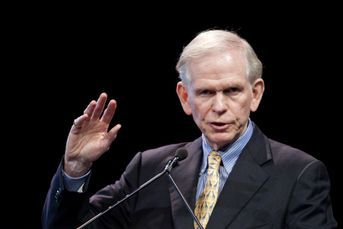Be a robo-adviser, the human way
Personalized financial advice should take cues from the robo-adviser trend/
It’s not hard to see why robo-advisers are generating so much buzz: They purport to use powerful technology to deliver what they call tailored investment recommendations at a fraction of the cost of traditional investment managers. That’s a pretty compelling proposition, especially for newbie investors.
But don’t think that personalized financial advice from a human being is going away anytime soon. If anything, technology-driven investing is a new opportunity for financial advisers. Though my company, Motif Investing, is not a robo-adviser, we have built an innovative technology platform that can allow advisers to streamline how they build, monitor and re-balance model portfolios. That, in turn, gives them more time to dedicate to their clients and provide strategic investment advice.
However, we like that robo-advisers are bringing more people into the financial services fold. Young investors without big balances have always struggled to find opportunities for getting advice on their portfolios. At least they can learn good saving and investing habits early by finding a solution with a robo-adviser.
What these young investors don’t know is how the robo-advisers will do in the next bear market. Will these investors flee at the first whiff of trouble and lock in losses because there is no one there to talk them off the ledge? Will they abandon their saving and investing programs because no actual investment adviser is available to guide them through highly volatile market conditions?
I think most investors prefer to engage on some level in their portfolios. They’d like rationales about why they may own this fund and not that one. Again, this is the kind of exchange an adviser provides.
Then there are the fees. Though certainly less than full-service investment management, they can seem lower than they truly are. The robo-advisers’ fees can generally range between 15 and 75 basis points. However, when you layer on the cost of the exchange-traded funds that make up their underlying portfolios, total fees easily approach 100 basis points. Most target date funds charge less than that.
Also, the questionnaires robo-advisers rely on to make these so-called personalized recommendations may not be as precise as an interview from an adviser. Risk tolerance is notoriously fickle and can fluctuate from one day to the next. Advisers can be better judges of their clients’ true risk tolerance.
Because of these shortcomings, investors eventually need more than advice by algorithm. Who but a real-live person can interweave investments, insurance, estate planning and taxes — not to mention a mortgage, elder care and college tuition? Studies conclude that advisers can add about 3 percentage points of return a year to what investors could do on their own through behavior coaching, tax planning and total return strategies.
But in the right hands, technology-driven investing can be one of the best innovations to come along for advisers in a long time. It frees up endless time that may be wasted on back-office operations that takes them away from revenue-generating activities such as behavior coaching, financial planning and the ability to take on and service more clients.
At Motif Investing, we recently launched the Motif Advisor Platform that makes these powerful tools available to RIAs, who can buy, sell and re-balance motifs — baskets of up to 30 securities — in one transaction at a cost of $20 to $50 per client per month. Included in the fee are the trading costs associated with a well-diversified portfolio.
In May, we also unveiled commission-free, management fee-free motifs for retail investors and advisers. These are our strategic asset allocation models built around time horizon and risk tolerance. Each model uses passive, best-in-class ETFs designed to seek diversification strategies. Each of the models is easily customizable, so advisers can superimpose their own judgment on the model. Because the Advisor Platform fee covers trading costs, it takes time and money considerations out of the equation when it comes to re-balancing. RIAs no longer must make the tradeoff between doing the right thing by clients and being price conscious or worrying that it will take up too much of their time.
Innovations are made possible because of the technology we now have available. Advisers can jump on this technology to streamline financial planning and improve economies of scale in their business, increasing revenue along the way.
Technology-driven investing isn’t so much a battle between humans and machines, but about improving the quality and efficiency of the financial planning process. Advisers can thrive in the era of robo-advisers if they can strike the right balance between high-tech and high-touch.
Hardeep Walia is the co-founder and chief executive of Motif Investing. Mr. Walia is on Twitter and on Quora.
Learn more about reprints and licensing for this article.








